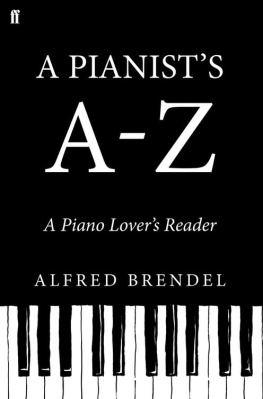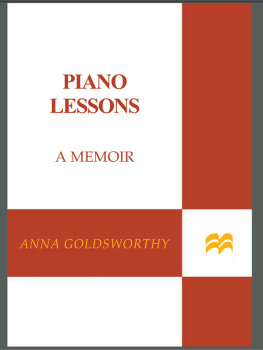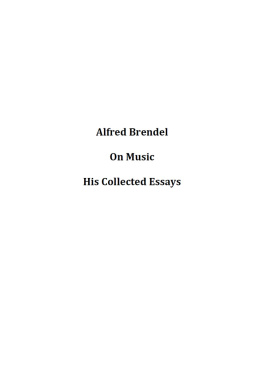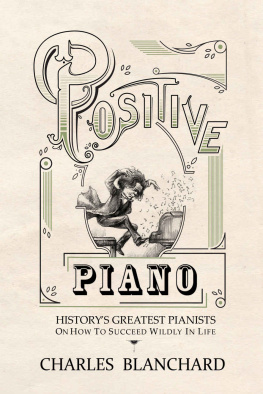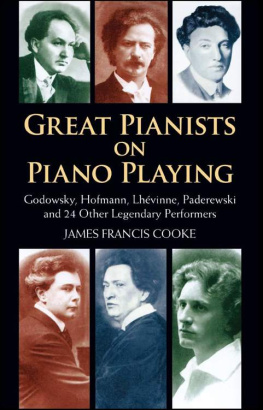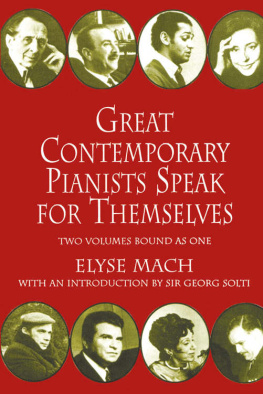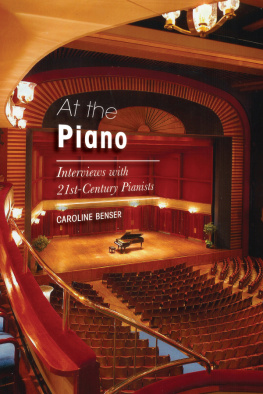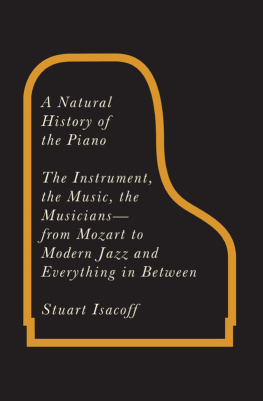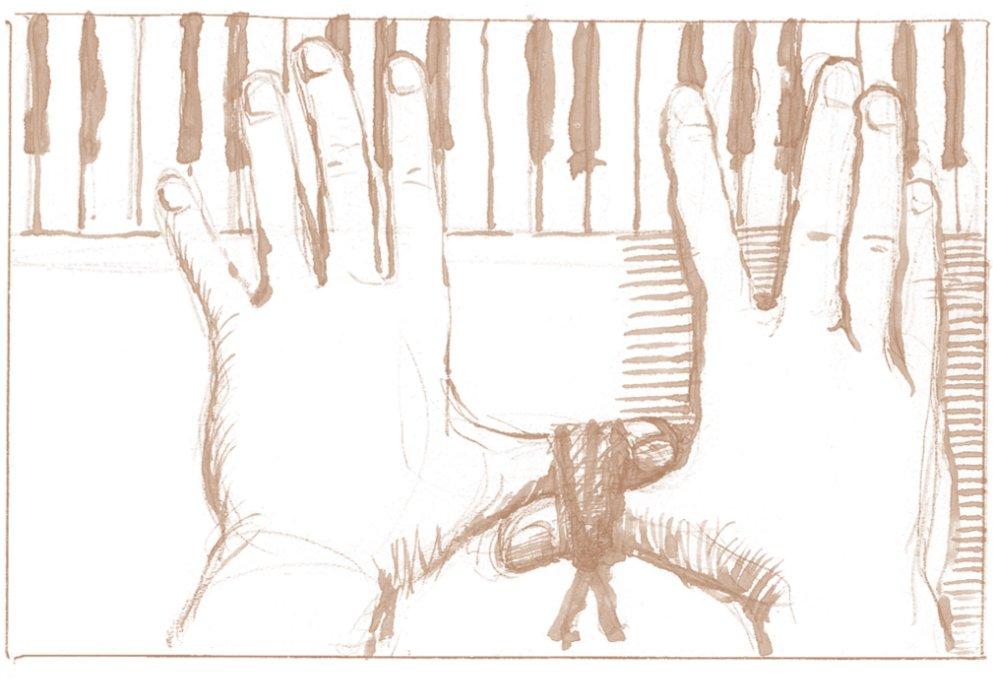
PREFACE This book distils what, at my advanced age, I feel able to say about music, musicians, and matters of my pianistic profession. My other mtier, literature, tells me to say things simply, but without undue simplification. Comprehensiveness is not an issue my literary sympathies tend towards the fragment and the aphorism. Those readers who are unfamiliar with my essays (Alfred Brendel on Music) or my conversations with Martin Meyer (The Veil of Order, Me of All People) are invited to look for more copious information there.
One can succumb to music, as it were with closed eyes, and simply do it. One can formalise it, intellectualise, poeticise, psychologise. One can deliver pronouncements, in sociological terms, on what music is allowed, or not allowed, to represent. One can infer from the pieces what they are or read into them what they should be. To the best of my ability I have sought to avoid the latter. An inclination for facing the music consciously, and linking it to the pleasures of language, has prevailed.
When talking about composers, I shall call them grand masters where I feel that they show pre-eminence in certain forms or types of work. (My apologies to freemasons and chess players.) In my vocabulary, words like greatness, genius and mastery still have their rightful place.
No conclusions should be drawn from the fact that the composers to whom I allot entries do not extend into the twentieth century. The absence of appreciations of, say, Debussy and Ravel, Schoenberg, Bartk, Stravinsky, Messiaen and Ligeti is connected to the fact that my own repertoire has, to a large extent, belonged to a musical era steeped in cantabile. We may call it the golden age of piano composition. Much twentieth-century music subsequently abandoned cantabile as its core. My friends know how passionately I have followed the music of the last hundred years. I cannot admire enough the heroism of that handful of composers who dared to pursue the consequences of the dissolution of tonality around 19089. It may be worth mentioning that I have performed Schoenbergs Piano Concerto sixty-eight times on five continents. An examination of this work can be found among my essays.
The present book was completed under the friendly auspices of the Wissenschaftskolleg zu Berlin. Valuable information came from Monika Mllering, Till Fellner and Maria Majno. My special thanks go to my co-translator Michael Morley. I dedicate A Pianists A to Z to my fellow musicians in admiration or amicable dissent, to my audiences in gratitude, and to the great composers in love.
A. B.
ACCENT If we want to see music as a landscape, accents would figure in it as hills and towers, humps and spires, planes and ravines. Unless accents are tied to syncopations they usually need to be prepared. Frequently the upbeat will take over part in Schubert sometimes a large part of their intensity. The opening rhythmic figure of Schuberts Wanderer Fantasy sounds, in this way, fresher and more natural; dactylic, it is marking time. Schubert was an accent enthusiast; it will often be necessary to translate his accents into a cantabile style. For a start, one has to distinguish his accent markings, sometimes excessively large in size, from diminuendo markings. The accented French horn notes at the beginning of the Great C major Symphony should be gently highlighted in their entirety rather than stabbed.
In Beethoven, we encounter, next to the customary accent mark, various other prescriptions and graduations like sforzando, sforzato, rinforzando, fortepiano and multiple repeated forte. (See Alfred Brendel on Music, pp. 357.)
*
ARPEGGIO Not just a way of accommodating small hands, but a means of expression. The expressive range of arpeggios reaches from the vehement to the mysterious (e.g. the opening of Beethovens Sonata Op. 31 No. 2).
It is easily forgotten that arpeggio derives from arpa (harp). The pianist should envisage a lady harpist controlling the rhythm and dynamics of her arpeggios with her gracious fingertips. Arpeggios need attentive care and acute ears. Where the arpeggiando sign is not indicated as spread across both hands, we should be hearing two simultaneous harps.
*
ARRANGEMENT (ADAPTATION) In the baroque era, works of other composers used frequently to be adapted without naming the source. Bachs famous D minor Toccata and Fugue for organ may well be an adaptation of a work by a contemporary (if not by Bach himself), written for solo violin.
Where composers themselves suggest that the same work might be played by different instruments like Schumann indicating either horn or cello they are, to a certain extent, adapters of their own music. Heinz Holliger played chamber works by Schumann beautifully on his various oboes. Regrettably, a recording of Mozart arias which I had begged him to do never materialised.
There are different categories and degrees of adaptation. The most obvious is confined to ornamentation and supplementation in baroque music or Mozart. Then there are transcriptions from one medium into another (Liszts piano scores of Berliozs Symphoniefantastique, of the Beethoven symphonies or Weber overtures), and those that make use of excerpts or elements of works, like Liszts opera paraphrases, or modify the works in the personal manner of the transcriber. Liszt has cultivated all of these. To anyone eager to grasp the knack of turning the piano into an orchestra, or producing operatic singing in pianistic terms, Liszts adaptations will provide incomparable enlightenment. Consulting the original scores, as well as good orchestral performances, should further sharpen the senses and help to find the exact reference point.
There were periods in which adaptations were welcome and obvious, and others where they were reviled. In justifying his free treatment of certain works, Busoni maintained that each notation of a work already amounts to a transcription a point of view I cannot share. But I admire his imposing piano versions of organ works, which manage to reproduce, besides the sonorities of the instrument, the resonance of church acoustics.
Since the 1920s, the increasing number of Urtext editions has fuelled a new purism. Schoenberg, who expected the performer to be his most ardent servant, nevertheless produced orchestrations of late-Romantic opulence of Bachs E flat Prelude and Fugue for organ BWV 552 and Brahmss G minor Piano Quartet. Since the last decades of the twentieth century a new wave of adapting and transcribing has swept over us: composers have displayed a penchant for paraphrasing their own works (Berio) or for using older masterpieces as a testing ground for their own notions of sound and structure.
I would call myself neither an adversary of all adaptations nor a spokesman for constant adapting. But I cannot agree with an approach that views masterpieces merely as raw material for personal excursions, treating them the way some contemporary directors treat plays. Where additions are necessary and desirable they ought to blend with the style of the composer. In general, substantial post-baroque compositions have remained more convincing in their original form. (An exception: Webers

